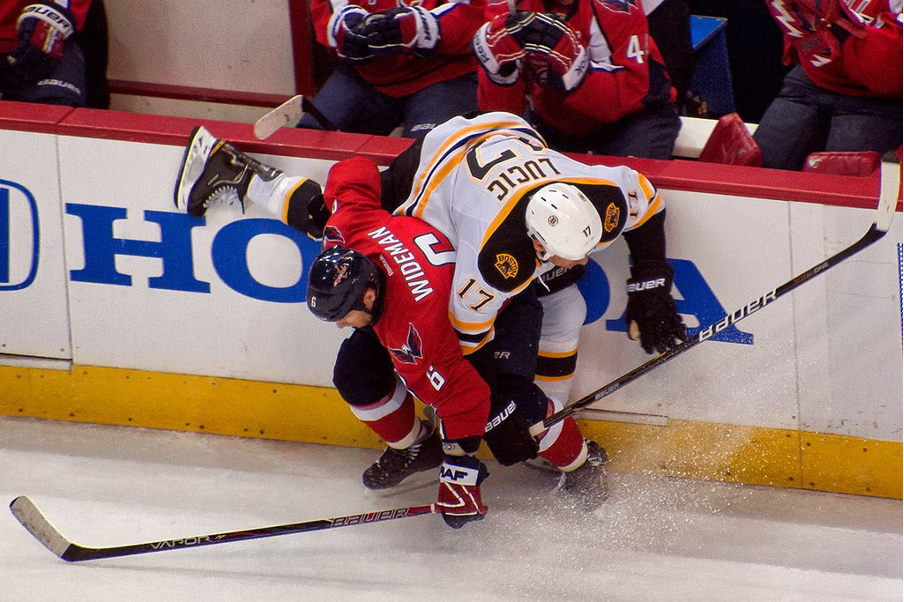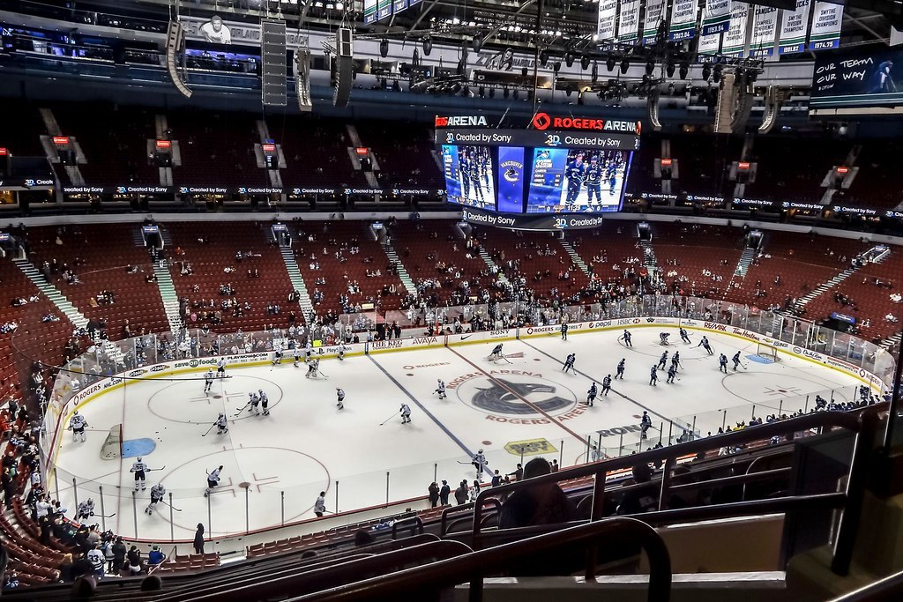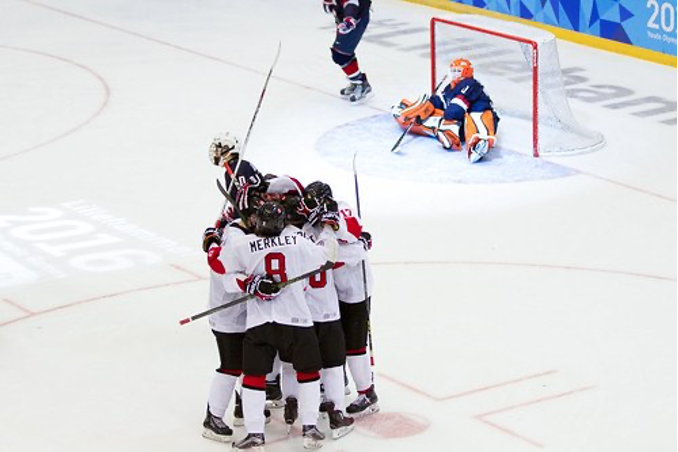A Beginners Guide
to Playing Ice Hockey
Rules and Structure
Body Checking
Body checking in ice hockey is a defensive technique aimed at disrupting an opponent with possession of the puck or separating the puck from the player entirely. Most types are not subject to penalty, and count as a legal check. A player can use a shoulder, hip or torso to hit or impede an opponent, but only when the opponent is in possession of the puck. If a player does not have possession of the puck, it is interference, and the player will receive a penalty. A body check that targets the head is illegal. A body check to an opponent’s back is illegal if the opponent is facing the boards.

Major Penalty
A player charged with a major penalty is sent off the ice for five minutes.
The most common major penalty is fighting. If both fighters receive five or ten-minute penalties, substitutions can be made.
At the referee’s discretion, an infraction commonly deemed a minor penalty can be increased to a major. This usually occurs if an opponent has been seriously injured, or if the referee believes there was a deliberate attempt to injure.
A player charged with a major penalty involving serious injury or attempt to injure is ejected from the game.
If a penalized player is ejected, a teammate is assigned to serve his major penalty. No substitution is allowed.

Minor Penalties
A player charged with a minor penalty is sent off the ice for two minutes, with no substitution allowed (power play).
Minor penalties are called for obstructing an opponent. Infractions include:
- Tripping (with the stick or knee)
- Holding (with stick or hands)
- Hooking (with stick)
- Interference (checking or impeding a player without the puck)
Penalties are called for dangerous use of the stick, including:
- Slashing
- Spearing
- High-sticking (hitting an opponent in the head or face)
- Cross-checking (hitting an opponent with the shaft of the stick)
Penalties are called for dangerous physical fouls, including:
- Elbowing
- Checking from behind
- Kneeing
- Roughing (broadly defined; usually involves a wrestling or shoving match)

Objectives
The objective is to score more goals than the opposing team.
A goal counts as one point on the scoreboard.
A goal can be scored by anyone on the ice, including the netminder.

Player Age Groups

Players
Each team has six players on the ice, five "skaters" and one netminder. The five "skaters" have assigned positions: three forwards and two defensemen. Netminder - Their job is to prevent the ice hockey puck from entering their net. Defence Players (left & right) - They are tasked with stopping the opposing forwards when their team does not have possession of the puck and providing offensive support when the team does have possession. Forward Centre - Responsible for taking faceoffs (the way play starts and restarts after a goal) to regain possession and covering the centre of the ice at both ends of the rink. Forward (left & right wing) - The wingers are responsible for play along the sides of the rink. They have some defensive responsibilities but are primarily relied upon as goal scorers. Player Substitutions Substitutions are unlimited and can be made at any time. A substitution does not require an official’s permission, or a stoppage in play. A player can join the game “on the fly” – during the flow of play – as long as the departing player is within five feet of the bench and not involved in the play or with an opponent.

Rink “Zones”
The rink is divided into zones by a red line at centre ice and two blue lines.
Defending Zone - The area where the goal net is located for the team defending that net.
Neutral Zone - The middle of the rink, between two blue lines.
Attacking / Offensive Zone - The area where the opposing net is located.

The Face Off
The game begins when the referee drops the puck between two opposing forwards. The faceoff is used to resume play following any stoppage in the game. There are nine designated faceoff spots painted on the ice.

The Game Clock
The game is played in three 20-minute periods. The clock is stopped during all stoppages in play, for example, if a penalty is called or a netminder makes a save.

The Puck Stick and Net
The Puck The puck is made of black, vulcanized rubber. A standard puck measures one inch thick and three inches in diameter, and weighs between 5.5 and 6 ounces. The puck can be moved with the hockey stick or the feet but picking it up with the hands is illegal. The Stick A stick is held by each player and used to retrieve, control, carry, pass and shoot the puck. Goals are scored by using the stick to shoot the puck into the opponent’s net. A shot that inadvertently deflects into the net off another player’s body is allowed to stand as a goal. The Net A cage measuring four feet tall and six feet wide, strung with nylon mesh in the back. There are two nets at opposite ends of the ice, guarded by the goaltenders.

What is a Penalty
A penalty in ice hockey is a punishment for an infringement of the rules. Most penalties are enforced by sending the offending player to a penalty box (sin bin) for a set number of minutes. During the penalty the player may not participate in play. Penalties are called and enforced by on-ice officials. The difference between a legal play and a penalty is open to interpretation by on-ice officials.
Power Play - A team has an advantage of having more players on the ice because the opposition team has taken a penalty and must remove a player from the game for a specified duration of time. A power play lasts for the duration of the penalty. In the case of minor penalties, the power play will end early if the team with the man advantage scores a goal.
Penalty Kill - The opposing team has a disadvantage of having less players on the ice. Player(s) must be removed to spend penalty minutes in the penalty box.
Penalties can be for stick fouls such as, high sticking, hooking and tripping, but they can be body fouls such as holding and roughing.
A minor penalty is two minutes in length. Major penalties and misconducts are for more serious offences and can be for five minutes, 10 minutes or a full match. The penalty ends immediately if a goal is scored by the opposing team.

Latest News
GB Futures U16 team for prestigious Four Nations tournament in Estonia is named
Find out more